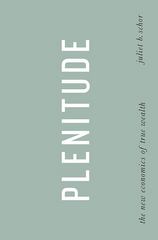can this be summarized in detail ? i'm not sure what is being explained here.
Inflation and Uncertainty borrowing costs, including mortgage rates, are having The world is in a volatile period: economic, geo- their desired effect in taking the heat out of domestic political, and ecological changes all impact the demand, with the housing market showing the earliest global outlook. Inflation has soared to multidecade and most evident signs of slowdown in such econo- highs, prompting rapid monetary policy tight- mies as the US. Monetary policy tightening has been ening and squeezing household budgets, just as generally-although not everywhere-accompanied COVID-19-pandemic-related fiscal support is waning. by a scaling back of fiscal support, which had previ- Many low-income countries are facing deep fiscal ously propped up households' disposable incomes. difficulties. At the same time, Russia's ongoing war in Broadly speaking, nominal policy rates are now above Ukraine and tensions elsewhere have raised the possi- pre-pandemic levels in both advanced and emerging bility of significant geopolitical disruption. Although market and developing economies. With elevated infla- the pandemic's impact has moderated in most coun- tion, real interest rates have generally not yet reverted tries, its lingering waves continue to disrupt economic to pre-pandemic levels. Tightening financial conditions activity, especially in China. And intense heat waves in most regions, with the notable exception of China and droughts across Europe and central and south Asia (October 2022 Global Financial Stability Report), have provided a taste of a more inhospitable future reflected in a strong real appreciation of the US dollar blighted by global climate change. This has also driven up yield spreads-the difference Amid these volatile conditions, recent data releases between countries' US dollar- or euro-denominated confirm that the global economy is in a broad-based government bond yield and US or German govern- slowdown as downside risks-including risks high- ment bond yields-for debt-distressed lower- and lighted in the July 2022 World Economic Outlook middle-income economies (Figure 1.3). In sub-Saharan (WEO) Update-materialize, although with some Africa, yield spreads for more than two-thirds of sover- conflicting signals. The second quarter of 2022 eign bonds breached the 700 basis point level in August saw global real GDP modestly contract (growth of 2022-significantly more than a year ago. In eastern -0.1 percentage point at a quarterly annualized rate), and central Europe, the effects of the war in Ukraine with negative growth in China, Russia, and the US, as have exacerbated the shifting global risk appetite. well as sharp slowdowns in eastern European coun- Beyond monetary policy alone, China's COVID-19 tries most directly affected by the war in Ukraine and outbreaks and mobility restrictions as part of the international sanctions aimed at pressuring Russia to authorities' zero-COVID strategy and Russia's invasion of end hostilities. At the same time, some major econ- Ukraine have also pulled down economic activity. China's omics did not contract-euro area growth surprised lockdowns have imposed sizable constraints domestically on the upside in the second quarter, led by growth and gummed up already strained global supply chains. in tourism-dependent southern European economies. The war in Ukraine and deepening cuts to supplies Forward-looking indicators, including new manufac of gas to Europe have amplified preexisting stresses in turing orders and sentiment gauges, suggest a slow- global commodity markets, driving natural gas prices down among major economies (Figure 1.1). In some higher once more (Figure 1.4). European economies- cases, however, signals conflict-with some indicators including the largest, Germany-are exposed to the showing output weakness amid labor market strength. impact of the gas supply cuts. Continued uncertainty An important factor underpinning the slowdown over energy supplies has contributed to slower real eco- in the first half of this year is the rapid removal of nomic activity in Europe, particularly in manufacturing, monetary accommodation as many central banks seek dampening consumer and, to a lesser extent, business to moderate persistently high inflation (Figure 1.2). confidence (Figure 1.1). However, a strong recovery Higher interest rates and the associated rise in in the tourism-dependent southern economies helped







